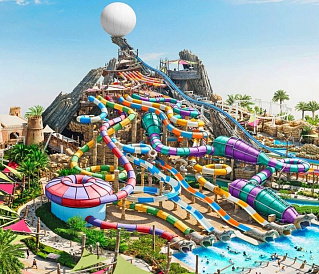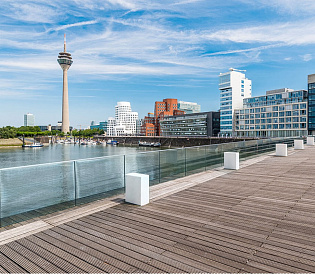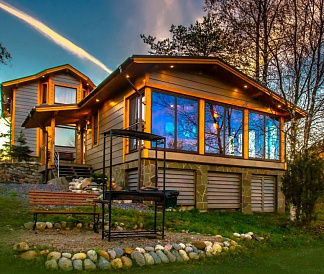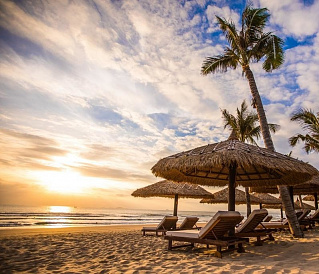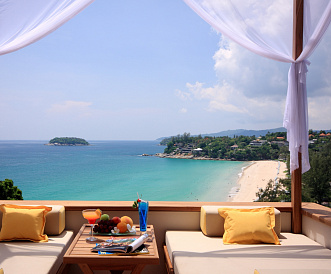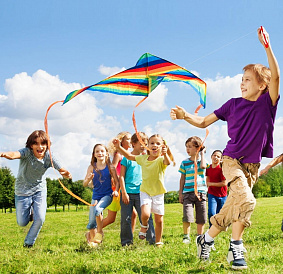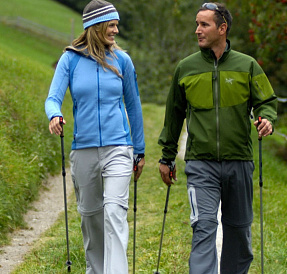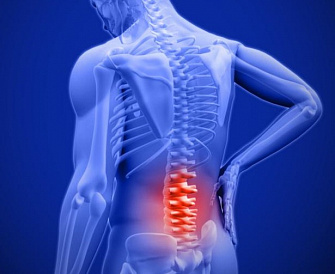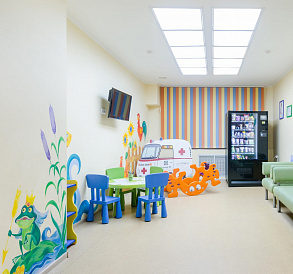14 best cities to live
Each of us, regardless of place of birth, seeks to choose the city most comfortable for living. The main requirements that are taken into account when moving: a developed infrastructure, safety and environmental friendliness. Many prefer large metropolitan areas with dynamic life, some settle in small quiet towns, someone moves to another country or even to another continent.
In our rating we have collected 14 cities of the world and Russia, the most suitable for life. Several criteria were evaluated: health, education, culture, stability, climate. Statistics change every year. In compiling the list, the latest data was taken into account, as well as feedback from the indigenous population and residents from other places.
Top cities for life rating
| Nomination | a place | Name of product | rating |
| The best cities to live in the world | 1 | Vienna, Austria | 5.0 |
| 2 | Toronto, Canada | 4.9 | |
| 3 | Melbourne, Australia | 4.8 | |
| 4 | Helsinki, Finland | 4.7 | |
| 5 | Munich, Germany | 4.6 | |
| 6 | Adelaide, Australia | 4.5 | |
| 7 | Tokyo, Japan | 4.4 | |
| The best cities to live in Russia | 1 | St. Petersburg | 5.0 |
| 2 | Tyumen | 4.9 | |
| 3 | Kazan | 4.8 | |
| 4 | Moscow | 4.7 | |
| 5 | Yekaterinburg | 4.6 | |
| 7 | Krasnodar | 4.4 | |
| 8 | Krasnoyarsk | 4.3 |
The best cities to live in the world
Vienna, Austria
Rating: 5.0
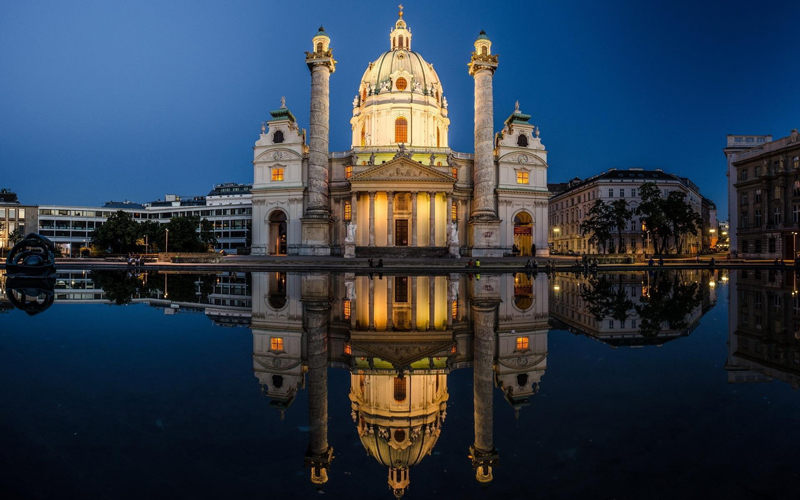
Lead in our list is the capital of Austria. The most beautiful city in Europe is located on the Danube River. It is surrounded by mountain Alpine villages, vineyards, lakes. The official language is German. A total of 2.6 million people live in Vienna and its suburbs. This is the largest metropolis of the country. The largest percentage of the population are Austrians and Germans. Also here live Croats, Hungarians, Slovaks, Czechs. Newcomers should not worry about religious conditions. In Vienna, all major denominations are represented: Catholics, Orthodox, Muslims, Jews, Protestants.
The history of the city dates back to the 1st century. There are still many cultural monuments that attract tourists from all over the world. Vienna is recognized as the world center of music, in which Beethoven, Mozart, Schubert masterpieces were created. The city is well developed public transport. Higher education can be obtained at 10 state or 3 private universities. In terms of safety of living, Vienna is among the top ten cities by this indicator.
The climate is mild, temperate, the air is clean. The Vienna Woods, located not far from the capital, became the same attraction as the royal palaces and residences. Alpine mountain range welcomes tourists all year round. Locals also relax in the forest area, where you can not only work out, but also improve your health on the hot springs.
Toronto, Canada
Rating: 4.9
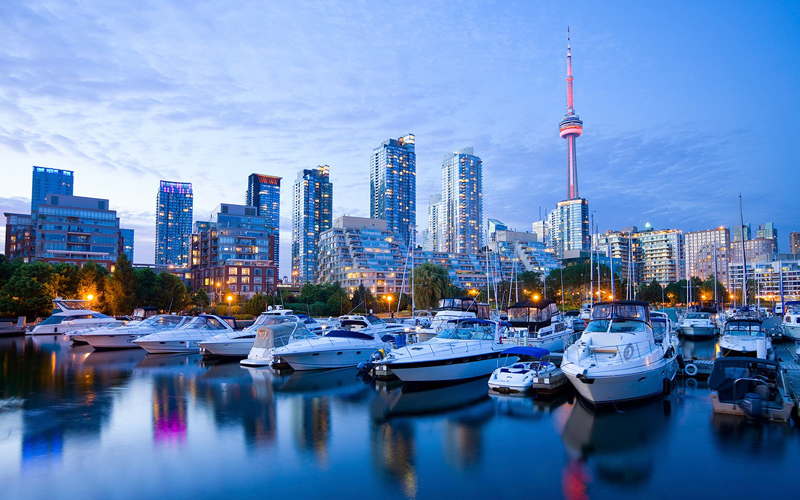
The second place ranking is a city located in the province of Ontario in Canada. The population is almost 3 million people. The main feature of the city is that almost half of the residents are immigrants who come from different countries of the world. Here is the largest Muslim community in Canada. English is the official language. It is spoken by the majority of the population of Toronto. Founded in 1793. The city got its real name in 1834.
Finding a job is easy enough. 1/6 of all jobs in the country are located within Toronto. Especially developed food and petrochemical industry. There are not so many historical monuments. But landscape attractions attract the attention of both local and visitors. A hundred kilometers from the city is Niagara Falls - a famous place in the world, as well as Lake Ontario. The climate is reminiscent of Central European with a clear division of the seasons.
Public transport: metro, buses and trams. The city has an international airport. Educational institutions are represented by universities and colleges with different areas of study. Toronto is recognized as one of the safest cities not only in Canada, but also in the entire North American continent.
Melbourne, Australia
Rating: 4.8
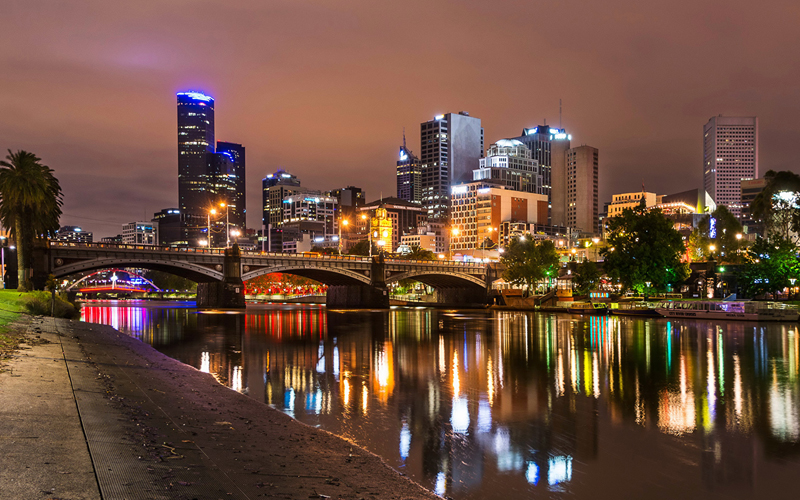
On the third line of the rating - the largest city in Australia. It is home to more than 4 million people. This is a multinational population, among which there are rarely misunderstandings on the basis of religious differences. Melbourne is a center of culture, sports, economics and industry. Here they constantly hold international events and welcome guests from all over the world. The city stands out with its picturesque nature and a mixture of two architectural styles: modern and Victorian.
Melbourne has a high environmental performance. The number of parks and squares is constantly growing, which improves the condition of the air, although the purity parameter is already far below normal. The climate is temperate maritime, comfortable for living regardless of the season. Beaches for rest and surfing are located in the south-east and west of the district. The city has a sufficient number of jobs. This is a seaport, automobile industry, information technology, banking.
The tram network is considered the largest in the world. Melbourne according to statistics is the safest city in Australia with a very low percentage of crimes committed here. And the offenses are not associated with an encroachment on a person’s life. The level of corruption is quite low. The city has more than 30 public hospitals and a large number of private medical institutions.
Helsinki, Finland
Rating: 4.7
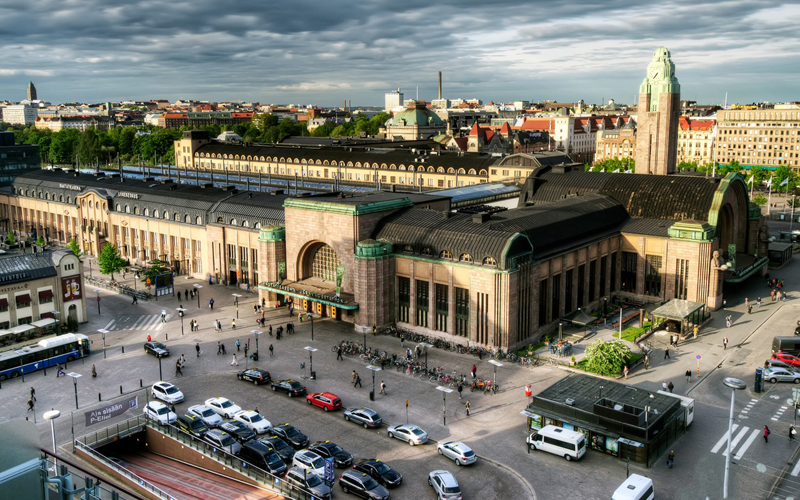
The fourth place is given to the capital of Finland. It is the largest city in the country, located on a peninsula in the Gulf of Finland. The bulk of the population - the indigenous people. And only 1/10 of the accounted for foreigners. Official languages: Finnish and Swedish. A large number of cultural and historical monuments made the city very popular among tourists. Here are museums, galleries, theaters. The main attractions are: the Assumption Cathedral, Trinity Church, Suomenlinna Fortress, Senate Square.
The city has 8 higher education institutions, including the largest in the country - the University of Helsinki. Secondary education is obtained in 190 public and private schools. The climate is average between sea and continental. Clean air is normal. Health care is free for residents and includes a full range of services, including counseling and dentistry.
The international road junction is vast. This is a sea route, railway, airport. According to statistics, Helsinki constantly occupies the first position at the lowest traffic congestion. City public transport is represented by the metro, trams, buses. The low crime rate allows the population not to worry about their security.
Munich, Germany
Rating: 4.6
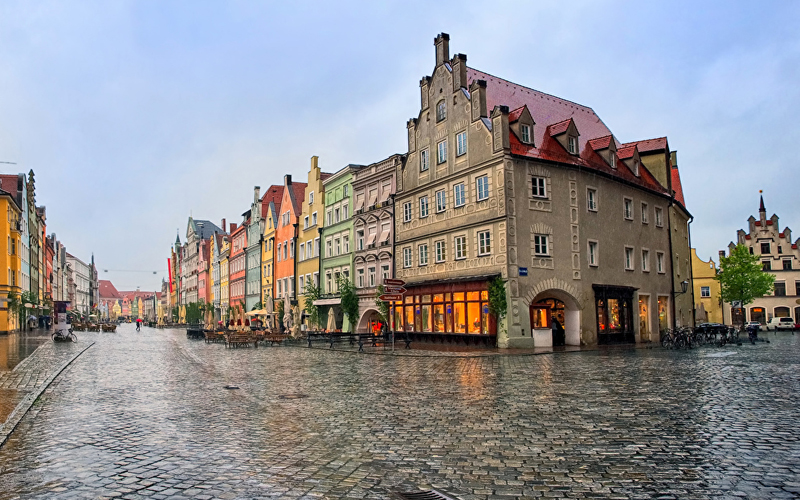
Munich - on the fifth line of the rating. The capital of Bavaria is located in the Isar valley in the south of the country. 1.5 million people live on the territory, of whom 79% are Native Germans, 21% are other nationalities. The city has a very rich history, which dates back 9 centuries. It is not only a major tourist center, but also famous for achievements in the field of science and technology.Among other things, Munich - the sports capital.
The climate is temperate. Winters are mild, mostly without snow. Summer is not hot, high temperatures are extremely rare. Cultural heritage includes a large number of museums and galleries. English park stretches throughout Munich. A large number of greenery and ponds improves the environment and increases the level of cleanliness of the air. Universities, colleges, the Academy of Sciences and the Academy of Fine Arts are located in Munich.
To reach any remote place in the city is not difficult. The network of fast trains, including trains and subways, covers the entire territory. Buses and trams also do not lose popularity among locals and visitors. The international message is presented by railway and air directions. The city is safe for living, which was repeatedly proved by crime statistics.
Adelaide, Australia
Rating: 4.5
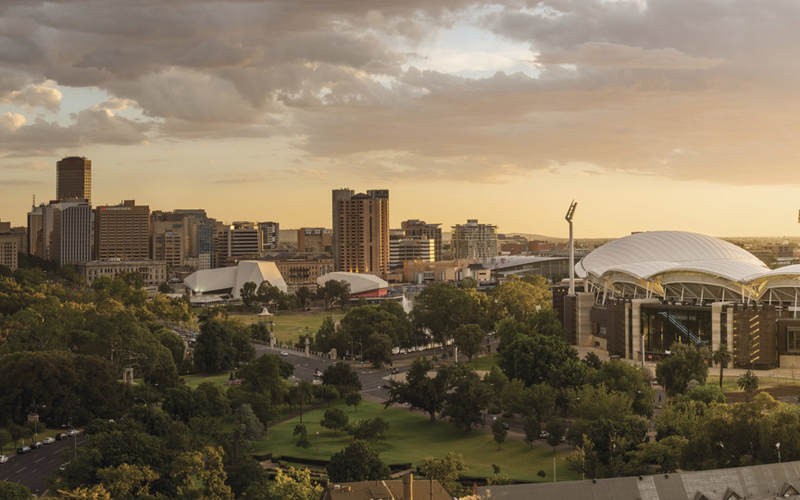
Sixth place ranking is another city in Australia, recognized as the best place to live. It is located on the southern coast of the country on a plain at the foot of the mountains. This location creates a comfortable natural environment. The climate is Mediterranean. In winter, a large amount of precipitation falls, in the summer they are insignificant. The city was founded in 1836. It is home to 1.4 million people.
Most of the population is indigenous. The rest are immigrants from the UK, Italy and Scotland. Many adhere to the Christian religion. Also represented are Catholics and Anglicans. It is worth noting that 24% of the population of Adelaide do not consider themselves to be any faith, that is, they are atheists. Secondary education is obtained in public and private schools. A large number of higher educational institutions makes it possible to choose any specialty without leaving the city.
Work is provided to everyone. Enough space. The main industries are the defense and oil producing industries, the production of medical equipment, and research and development activities. Adelaide is an important transportation hub of the country. International communication is carried out on the basis of a new modern airport. High quality of life and low crime rates attract more and more immigrants from other countries to Adelaide.
Tokyo, Japan
Rating: 4.4
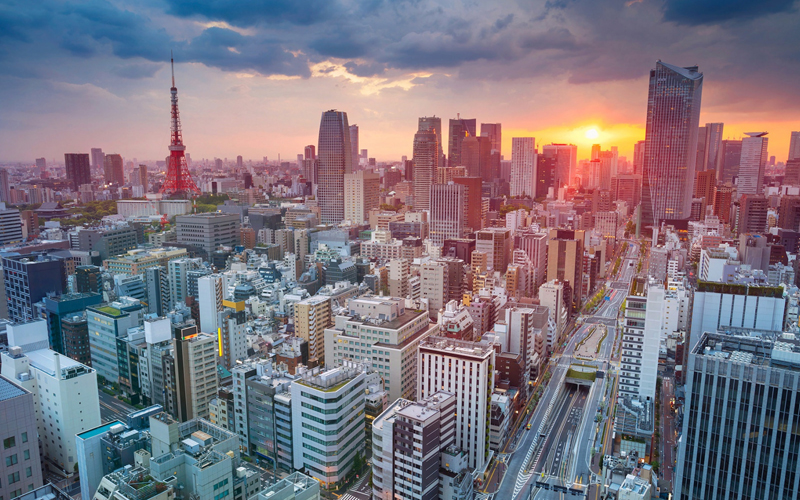
The seventh line of the rating is confidently occupied by the Japanese capital. The population is 13.8 million people. The city does not imply a quiet and peaceful life. It is an industrial, political, cultural center with a highly developed infrastructure that provides residents with a decent standard of living. The territory was inhabited in the Stone Age. Most locals are Japanese. There are about 350,000 foreigners altogether. These are mainly Chinese, Korean and Filipino.
The city is located on the island of Honshu, washed by the Pacific Ocean. There are many parks and squares. In Ueno Park you can visit the museums of science and art. The climate is subtropical. Summer is coming late enough. Public transport is represented by rail and road, underground. Tokyo attracts students from all over the country and even the world. There are many universities and colleges. Among the historical sights worth mentioning is Edo Castle, Old Palace Park Hama, the Tokyo Imperial Palace.
Tokyo for several years leading among the safest cities on the planet. This concerns not only the level of crime. The construction of buildings is carried out taking into account the location of the island and natural disasters, so a person is maximally protected from many factors.
The best cities to live in Russia
St. Petersburg
Rating: 5.0
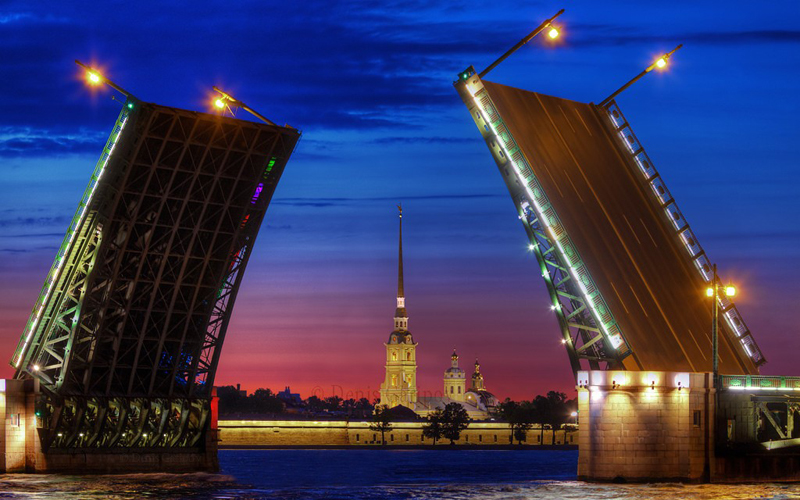
The first place ranking among Russian cities is St. Petersburg - the northern capital of our country. Second in population, it has a very rich history, and today is the most popular tourist destination. Currently, it has 5.383 million people. More than 90% are Russians.Other nationalities: Ukrainians, Tatars, Belarusians, Jews. Most believers are Orthodox of the Moscow Patriarchate. But such confessions as Muslims, Jews, Buddhists are also represented.
St. Petersburg is the northernmost million-plus city in the world. It is located on the coast of the Gulf of Finland. The climate is moderate, middle between continental and sea. Reservoirs together with a large number of green spaces create comfortable conditions for life, making the air clean and fresh. The city is an important economic center, so those who are interested can always find work in their specialty.
In St. Petersburg there are more than 690 educational institutions. Many students are visitors from other cities. As a scientific and educational center, there are more than 350 organizations in St. Petersburg: the Academy of Sciences and the Research Institute. Health care is considered the best in the country, the death rate is the lowest. The crime rate is low.
Tyumen
Rating: 4.9
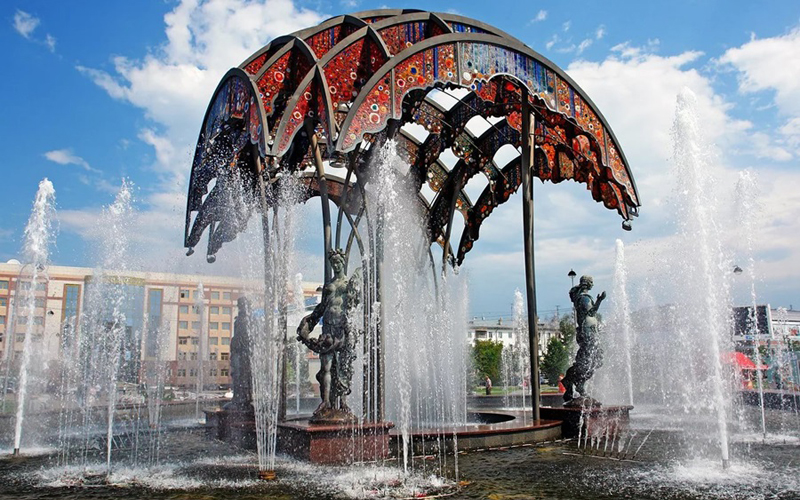
On the second line of the rating - Tyumen. Today 788 thousand people live there. 84% fall on the Russian population, 6% are Tatars. In the city there are temples and prayer houses of various denominations: 11 Orthodox, 5 Muslim, 3 Protestant, 1 Catholic, 1 Jewish. It originates in the first years of the XV century. Today it is a modern metropolis, cultural, educational and scientific center of Siberia. There are research and design institutes, 15 higher educational institutions, 150 pre-school institutions.
Tyumen is distinguished by the presence of a large number of cultural sites. These are theaters, museums, galleries. Parks and squares improve the environment. The air purity does not exceed the norm. The climate is temperate continental. For employment offers various places. The main branch of employment is the oil refining industry. Tyumen is a traffic intersection and connects roads of federal significance. There are 2 airports in the city. Tyumen - railway junction of the Trans-Siberian Railway.
There are enough medical institutions to provide the population with qualified help. There are 10 stadiums in the region. The city is represented by professional football, hockey and volleyball teams. A positive trend is a decrease in crime rates, which leads to the conclusion about safe living in Tyumen.
Kazan
Rating: 4.8
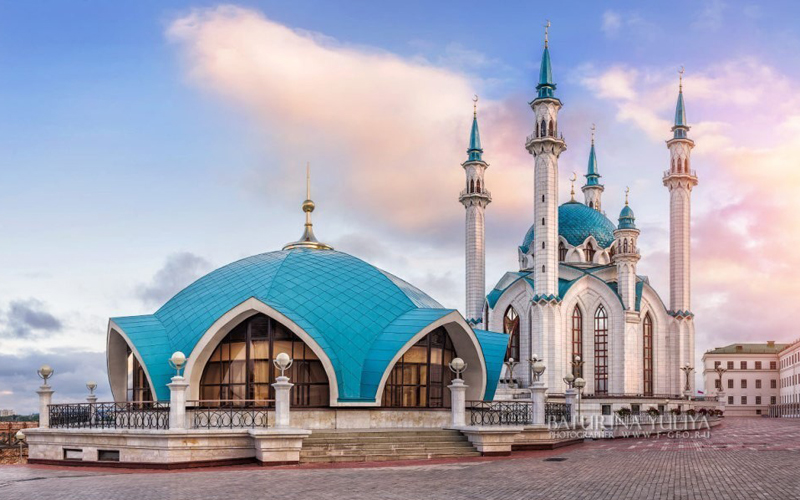
The third place in the rating is given to Kazan, one of the most beautiful Russian cities. The ancient settlement was founded in 1005. Today 1.251 million people live in the city. The multinational society unites Russians, Tatars, Chuvash and other peoples. Both Muslims and Orthodox Christians get comfortable here. Kazan ranks third among the most popular tourist destinations in Russia. Many ancient temples and mosques attract travelers from all over the world.
Kazan is located in a picturesque place on the banks of the Volga. The Kazanka River divides the city into two parts: historical and modern. The industry is well developed and every year provides new, well-paid jobs. The main employment is in the engineering, food, chemical, light industries. The city has research institutes. The rapid pace of development was set by an innovative economy.
The educational infrastructure is created taking into account the needs of the population. The city has 327 kindergartens, 168 schools, 44 higher education institutions. In Kazan, there are 120 medical institutions. Due to the high level of health care, they come to the city from other regions for consultations and treatment.
Moscow
Rating: 4.7
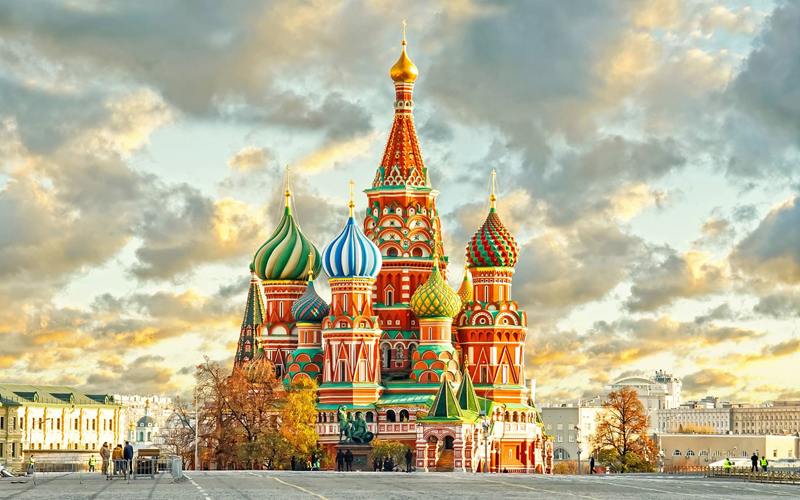
The capital of Russia is in fourth place in the ranking. The population is 12.6 million people. It is the largest Russian-speaking city in the world and the bulk of it falls on the Russians. Also here live Tatars, Armenians, Azerbaijanis, Jews, Ukrainians. Religious denominations are represented by Christians, Muslims, Jews, Buddhists. The city is located on both banks of the Moscow River. There are many other reservoirs.These are lakes, rivers, ponds, streams.
By the number of green spaces, Moscow competes with Singapore and Sydney. Every year, park areas grow, which significantly improves the ecological condition of the region. Climate with a pronounced seasonality. Moscow is the financial center and administrative brain of the country's economy. The majority of Russian banks are registered here. The industry is represented by many industries. In recent years, production moved beyond the capital. Moscow occupies a leading position in the level of wages in the country.
There are more than 260 higher education institutions in the city. Entrants from all over the world come to get an education. 200 pools, more than 30 stadiums, 20 covered ice arenas, 40 sports palaces are open in Moscow. International events are held in the capital, receiving guests from all over the world.
Yekaterinburg
Rating: 4.6
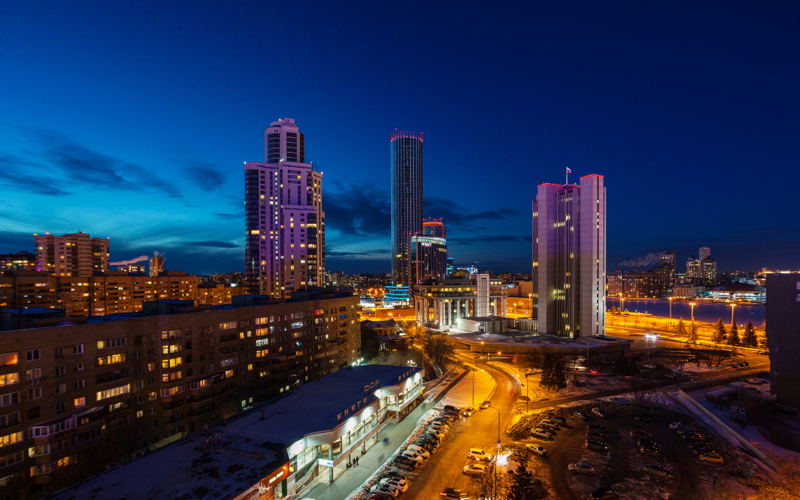
Yekaterinburg, which changed its name to Sverdlovsk and then again received its original status, ranks fifth in the ranking. Russian - 89%. In total, more than 100 nationalities are represented. These are Tatars, Ukrainians, Bashkirs, Mari, Germans, Chuvash, Armenians and others. Ekaterinburg is the fourth largest city in terms of population. It is home to 1.47 million people. It is the largest economic center not only in Russia, but in the whole world.
The metallurgical, light, food, machine- and instrument-making, printing industries are developed here. There is no shortage of jobs. Due to the continuous landscaping and increase in the area of parks and squares, the city’s ecosystem has improved significantly. Ekaterinburg has become one of the most significant educational centers. Graduates occupy senior positions in the management and financial sphere, becoming leading employees of research institutes.
Due to favorable conditions for life, people from other regions constantly arrive in the city. This indicator is much higher than the number of those who left Yekaterinburg. Residents receive full health care services. Qualification of specialists allows to solve many, even very difficult tasks.
Rating: 4.
Krasnodar
Rating: 4.5
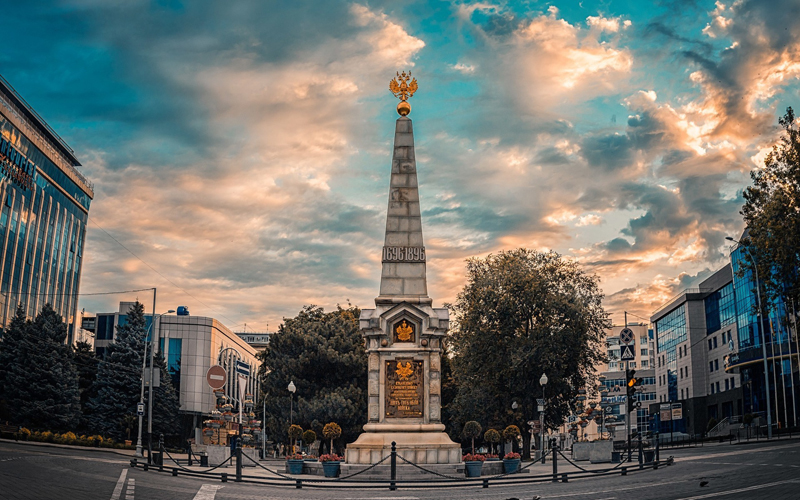
The sixth place in the rating is given to Krasnodar, where today more than 900 thousand people live. The multinational population consists of Russians, Armenians, Adygs, Ukrainians, Tatars, Greeks, Azeris. The number of migrants is constantly growing. The city is located in the valley of the Kuban River, 120 km from the Black Sea and 140 km from the Azov. The mild continental climate creates a hot summer and a moderately warm winter.
Security is improving from year to year. Recently, the birth rate has increased, mortality has decreased.
The region has a well-developed economy, there are enterprises of various industries that provide the population with the necessary jobs. The rapid pace of housing construction has allowed Krasnodar to enter the top three in terms of the volume of commissioned real estate along with Moscow and St. Petersburg.
The city is not inferior to many Russian megacities in terms of education. There are 19 state and 12 non-state higher institutions. Secondary education is obtained in 114 schools, gymnasiums and lyceums. Krasnodar is the main cultural center of Kuban. There are 30 museums, 11 theaters, 8 concert venues, 9 art galleries.
Krasnoyarsk
Rating: 4.4
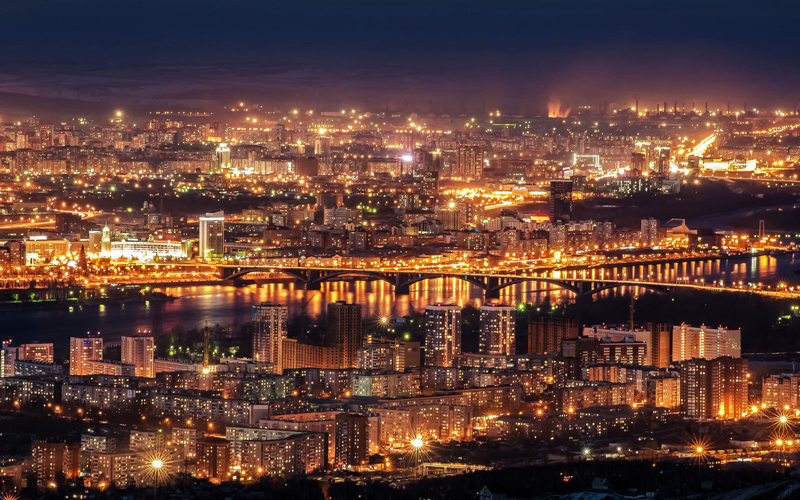
On the seventh line of the ranking is located one of the most beautiful cities of Siberia. The population as of January 2024 was 1.1 million people. People of different nationalities and religions get along here. The economy is represented by various industries. These are mechanical engineering, hydropower, metallurgy, chemical, woodworking, space industries. The newly opened enterprises give an increase in jobs, so the region has a high level of employment.
In Krasnoyarsk, there are 29 higher educational institutions, as well as 21 research institutions. There are enough places in kindergartens.Secondary education is obtained in gymnasiums, lyceums and general education schools. There are large medical institutions in the city, a network of district clinics is widely developed.
Krasnoyarsk is famous for its bridges. These are automobile and railway directions across the rivers Yenisei, Kacha, Bugach, Bazaihu. The city is a major road junction. You can reach other regions of the country and the world through railway or air communications. Ecological conditions meet the standards. Park areas and natural forests improve it several times. In terms of security, Krasnoyarsk is among the ten best cities in Russia according to statistics on crimes committed during the year.
Attention! This rating is subjective, is not advertising and does not serve as a guide to the purchase. Before buying, you should consult with a specialist.


